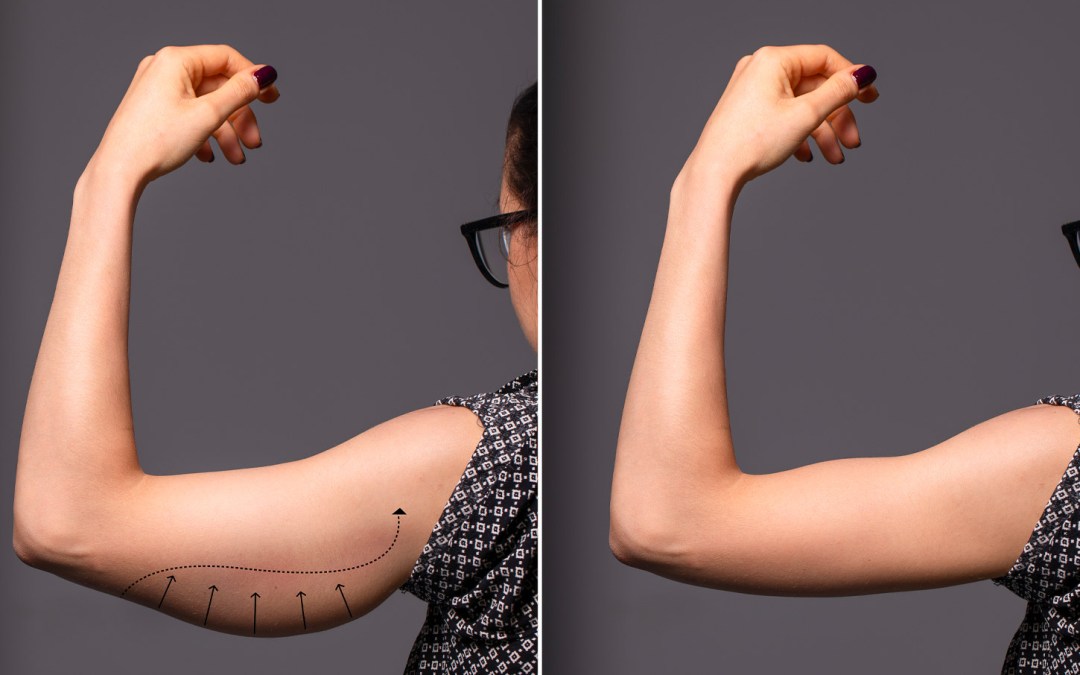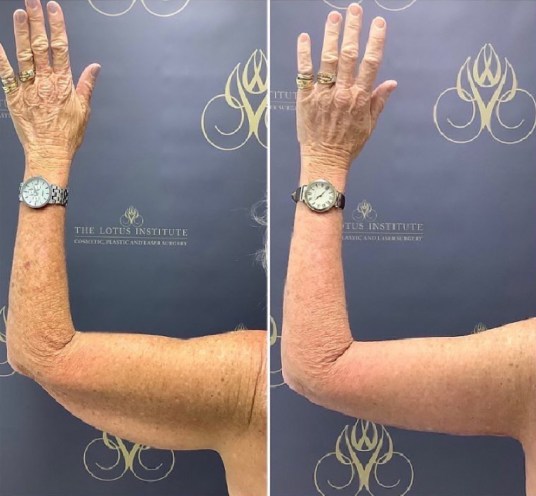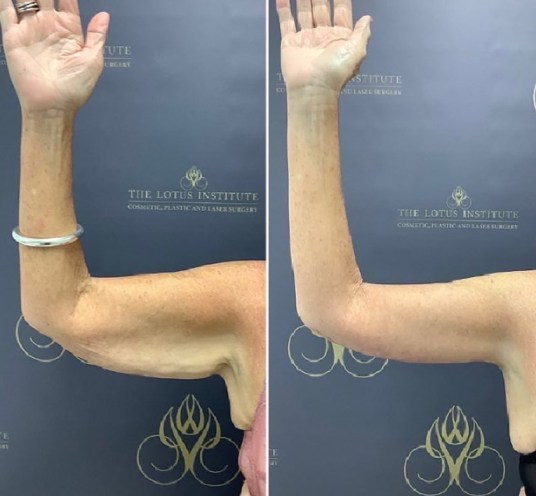Introduction to Brachioplasty (Arm Lift Surgery)
Brachioplasty is a surgical procedure, commonly referred to as an arm lift, is a specialised surgical procedure designed to reshape and tighten the back part and underside of the upper arm, from the shoulder to the elbow. This surgery is often pursued by individuals who have experienced significant weight loss or age-related skin changes, resulting in loose skin that is resistant to diet and exercise. If you have excess skin and fat in your upper arms that creates folds or causes discomfort, brachioplasty may be an effective solution to reduce excess skin and achieve a contoured arm appearance.
Understanding the Need for Brachioplasty
Brachioplasty surgery is particularly relevant for those who have undergone substantial weight loss or are experiencing skin sagging due to ageing. The procedure is designed to address issues such as:
- Excess Skin: After significant weight loss or due to ageing, the skin may lose its elasticity, leading to sagging and folds in the upper arms. This excess skin can be aesthetically unpleasing and difficult to manage with exercise alone.
- Discomfort: The excess fat can cause physical discomfort, including chafing and irritation. It may also contribute to hygiene issues, making it harder to clean and maintain the area properly.
By addressing these concerns, brachioplasty aims to improve both the physical appearance and overall comfort of the upper arms.
Preparing for Brachioplasty
Proper preparation is crucial to ensure a successful brachioplasty and minimise the risk of complications. Here’s a guide to what you need to do before undergoing the procedure:
- Medical Evaluation: Your specialist plastic surgeon will conduct a thorough medical evaluation, including a review of your health history and a physical examination. This helps determine whether you are a good candidate for the surgery and identifies any potential risk factors.
- Stable Weight: It is essential to achieve and maintain a stable weight for at least three months prior to the surgery. Significant weight fluctuations can affect the results of the procedure and potentially lead to additional skin sagging.
- Smoking Cessation: Smoking impairs the healing process and increases the risk of complications. You should quit smoking at least six weeks before your surgery to promote optimal healing and reduce the likelihood of complications.
- Consultation:During your consultation, discuss your goals and expectations with your surgeon. This is also the time to ask questions about the procedure, potential outcomes, and any concerns you may have.
Book a consultation with Dr Peter Widdowson today
The Brachioplasty Procedure
Brachioplasty is performed under general anaesthesia, ensuring that you are asleep and comfortable throughout the surgery. Here’s what typically happens during the arm lift procedure:
- Incision Placement: Your surgeon will mark the areas for incision based on the amount and location of excess skin. Incisions are generally made along the inside or back of the arm to minimise visible scarring. The exact placement of the incisions will depend on the surgeon’s assessment of your specific needs.
- Removal of Tissue: The procedure involves removing excess skin and fat from the upper arms. Liposuction may also be used to further contour the area. The remaining skin is then tightened and reshaped to create a more defined appearance.
- Duration and Recovery: The surgery usually takes about two hours. In many cases, it can be performed as a day procedure, meaning you may be able to go home the same day. However, some patients may need to stay overnight for observation.
- Post-Operative Care:After the surgery, you will be given pain medication and antibiotics to manage discomfort and prevent infection. A compression garment will be applied to the arms to reduce swelling and support the healing process.
The Results
Arm Lift results
Potential Risks and Complications
Like any surgical procedure, brachioplasty carries some risks. It’s important to be aware of these risks and discuss them with your surgeon. Potential complications include:
- Scarring:All patients will have visible scars as a result of the surgery. The appearance of these scars can vary based on individual healing and the extent of the procedure. Surgeons aim to place incisions in less noticeable areas, but some scarring is inevitable.
- Infection: There is a small risk of infection at the incision sites. Antibiotics are prescribed to help prevent this, but it is crucial to follow post-operative care instructions to minimise the risk.
- Bleeding and Seroma: Excessive bleeding and fluid accumulation (seroma) are possible complications following body contouring procedures. Your surgeon will monitor for these issues and address them if they occur.
- Nerve Damage: Damage to nearby nerves can cause temporary or permanent numbness. This risk is minimised by choosing an experienced and accredited plastic surgeon.
- Skin Looseness: In some cases, the skin may loosen again, especially if there are significant weight changes after the surgery.
- Results: The outcome of the surgery may not always meet your expectations, and additional procedures may be needed to achieve the desired results.
Post-Operative Recovery and Care
Proper post-operative care is essential for achieving the best results and ensuring a smooth recovery. Here’s what to expect:
- Immediate Aftercare: After waking from anaesthesia, dressings or bandages will be applied to your incisions, and you may be placed in a compression garment to reduce swelling.
- Pain Management: Pain and swelling are common after the surgery. Your surgeon will prescribe pain medication to manage discomfort. You should follow the instructions carefully to ensure proper healing.
- Follow-Up Appointments: Regular follow-up visits with your surgeon are important to monitor your recovery and address any concerns. Your surgeon will provide specific instructions on how to care for your incisions and when it is safe to resume normal activities.
- Activity Restrictions: Avoid putting too much pressure on your incisions during the healing process. Your surgeon will advise you on when you can gradually resume physical activities and exercises.
- Long-Term Results: Once fully healed, your arms will appear thinner and firmer. Maintaining a stable weight and a healthy lifestyle is key to preserving the results of your brachioplasty.
Brachioplasty is a highly effective procedure for individuals dealing with excess skin and fat in the upper arms, offering a long-lasting solution to improve both appearance and comfort. If you’re considering this surgery, Dr Peter Widdowson at The Lotus Institute in Southport, has over 30 years in Plastic, Reconstructive & Cosmetic Surgery and has a team of experienced and dedicated nursing staff. By understanding the preparation, risks, and recovery process, you can make an informed decision and work towards achieving your desired results.
Before proceeding, ensure you have a clear understanding of the procedure, including the potential risks, benefits, and costs. Discuss your options with an accredited plastic surgeon to determine if brachioplasty is right for you. Contact The Lotus Institutetoday to learn more about how they can help you achieve your cosmetic goals.
View our other cosmetic surgeryservices.




